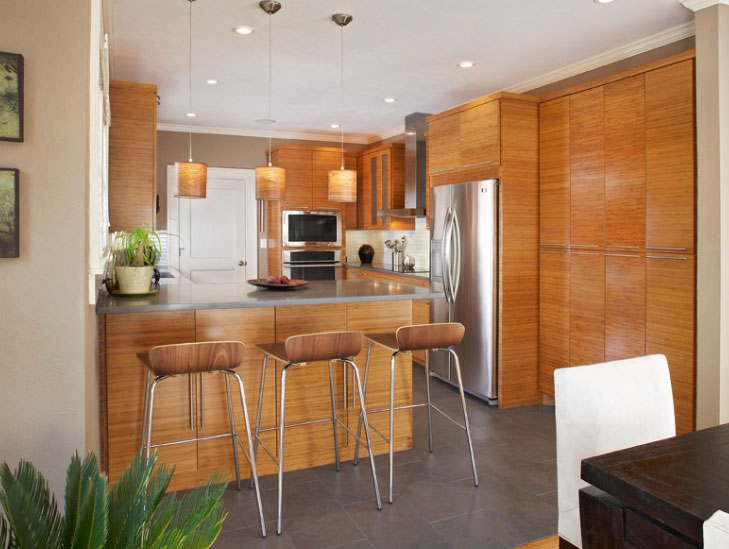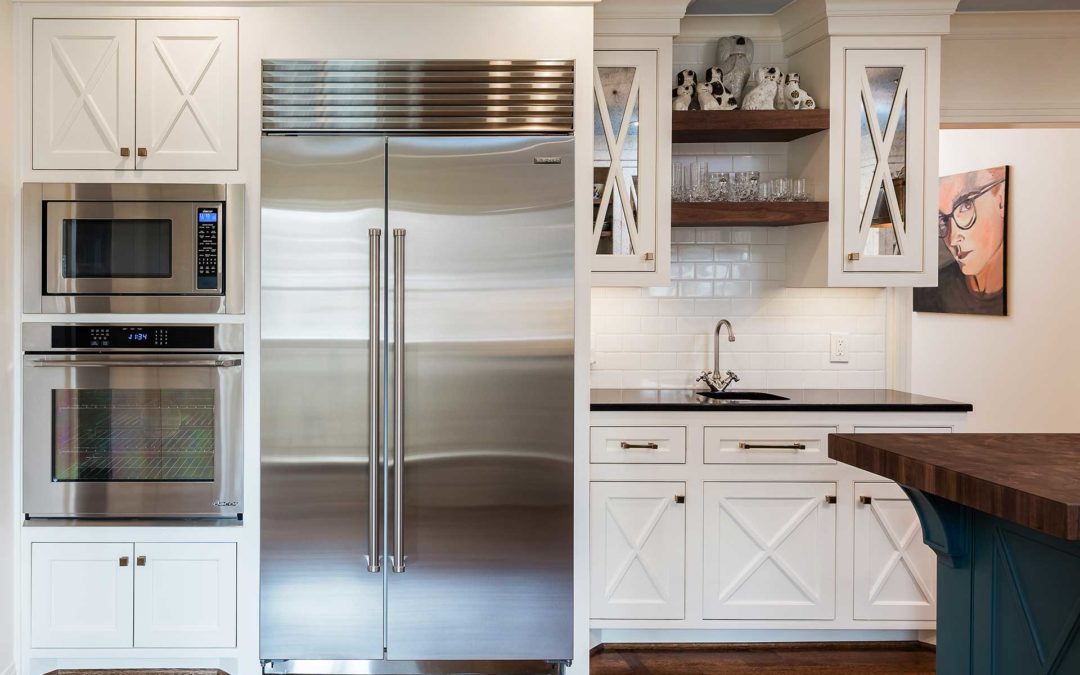Choosing Kitchen Cabinets For Your Kitchen Remodel
A kitchen remodel is one of the most significant home improvement projects you can start. Not only is it an important investment in your home, but it also comes with a myriad of decisions and factors to consider. One of the important decisions that you will make involves the type of kitchen cabinetry you will choose, dictating the overall direction of your kitchen design. Here’s what you need to consider when it comes to choosing your cabinetry:
First Things First: Start with Form and Function
When you are planning any type of kitchen renovation, form (looks) and function (usefulness) are paramount. Analyze how you use your space as a first step in the design process. Consider your needs and desires and how your kitchen would function better for you with certain amenities. Also know your design style—what you like and don’t like. Could you really use recycling storage? Do you want an island for food prep and additional seating? Do you need storage space for specialty appliances? How important is it for you to integrate technology advancements into your kitchen? To make life easier, could you benefit from a streamlined kitchen design that is easier to keep clean and maintain? These are just a few questions to ask yourself. A kitchen remodeling professional can help you flush out every detail and make sure your kitchen, and its cabinetry, function perfectly for you now and well into your future.
What’s Your Budget?
One of the most important considerations is none other than your budget, and when it comes to selecting kitchen cabinets, there are a couple options worth mentioning: 1) semi-custom, or mid-level cabinets, and 2) custom cabinets, which are often the highest quality that you can purchase. Here is a closer look at each of these two cabinet types.
- Semi-custom: Semi-custom cabinets are a popular choice in kitchens as a “middle of the road” option. This type of cabinetry comes in a wide variety of quality and price levels. They are made to order with several choices for modifications. You’ll be able to choose specifications such as door styles, finishes, wood species, accessory modifications, drawer box options, and custom cabinet size possibilities, for example.
- Custom: These premium cabinets are your most expensive option, but they are designed to your exact specifications and built with better construction (i.e., solid wood drawers with dovetail joinery, full-extension drawer guides, doors with solid wood frames, etc.). Because these cabinets are made completely custom, they can also be built with any add-on features that you choose.
As you set a budget and choose your cabinet type, you’ll want to keep in mind the amount of cabinets to include in your space as well. Most kitchens are designed with 25 to 30 feet of cabinet space.
Framed or Frameless: What Door Style Works Best for Your Kitchen?


Your kitchen cabinet door style influences your kitchen remodel much more than just how your cabinets open and close. In fact, the door style can also go a long way toward enhancing the overall aesthetics of your kitchen. You’ll want to choose a style that works with your overall kitchen design, but also satisfies your functional preferences.
Here’s a look at two of the main types of door styles, framed vs. frameless:
Framed cabinets are more of an all-in-one type of cabinet, where the cabinet drawers and doors are each attached to the box frame. Framed cabinets have more options and are more likely to have doors with raised panels and decorative features. They are also typically used in more of a traditional-style kitchen.
Frameless cabinets, also called “full access cabinets” tend to fit a more modern conventional style kitchen. They offer greater accessibility by eliminating the face frame and have a more open appearance, which means they could use them without doors if they wanted. As a result, frameless cabinets rely on thicker box construction for durability.
Select an Overall Design Theme
There are many themes and design styles to choose from. We suggest spending some time browsing each theme to see which fits best with your inherent design style. Then, narrow your selection and determine which theme also fits your home’s existing architecture. Some of the most popular design themes include craftsman, farmhouse, contemporary, rustic, traditional, transitional, and modern. Here is a brief overview of each:
- Craftsman: Simple cabinets with minimal features.
- Farmhouse: Features unique cabinet designs often constructed from natural materials.
- Contemporary: Defined by sleek, smooth surfaces to create an elegant look and feel.
- Rustic: A more natural look and feel, often defined by a more unfinished wood look.
- Traditional: Defined by symmetry, balance, and blended colors.
- Transitional: A combination of traditional and contemporary style.
Don’t Overlook Door Style
Beyond the general cabinet theme, you will also need to select a door style. Again, the options are plentiful, so we strongly recommend spending some time browsing and selecting doors that fit your vision. Here is a closer look at some of your choices:
- Shaker: One of the most common and also the simplest styles, shaker cabinets are essentially frames with center panels. They offer a clean look that suits most kitchens.
- Flat/slab: Another simple option, the flat/slab style is typically plain and ideal for contemporary-style kitchens.
- Beadboard: Beadboard is a bit more stylish of an option, as these cabinets look like vertical wall paneling. It is a style that is best suited for more rustic kitchens to create a farmhouse look.
- Open: Fitting to the name, open cabinets do not typically have doors, thereby allowing homeowners to display their fine china, glassware, or other collectibles. Option to include glass door cabinets.
- Raised panel: These are somewhat similar to the shaker cabinet, except the center panel is raised above the rest of the cabinet drawer. When fine-detailing matters, this option is a great choice, also working well in a variety of kitchens.
- Recessed panel: These cabinets are the opposite of raised panel, and instead have a recessed panel in the center and raised border surrounding it.
Value-Added Features to Consider
Once you have decided on the basics, there are variety of add-on features that you can choose from to complete your kitchen renovation. Here is a look at some of those options:
- Charging stations
- Cutting board drawers
- Spice racks
- Corner drawers, deep dividers, or tray dividers
- Lazy Susan
- Soft close drawers
- Spring-loaded shelves
- Ornamental detailing
- Special lighting
- Pantry pull out
- Waste/recycle pull outs
- Pet station pull outs
Don’t forget Hardware
Last but not least, you will also want to consider the hardware that you install in your cabinets, notably the handles, hinges and any latches for the cabinets and cabinet drawers. Make sure the style and material complement your overall kitchen design.
Ready to start your kitchen remodel or talk to a remodeling professional about cabinetry ideas for your kitchen? Call us today at 214-827-3747 or schedule a consultation.
Interested in exploring kitchen cabinetry options for your home? Check out Blackline Renovation’s Kitchen Design Portfolio or visit us on Houzz.

